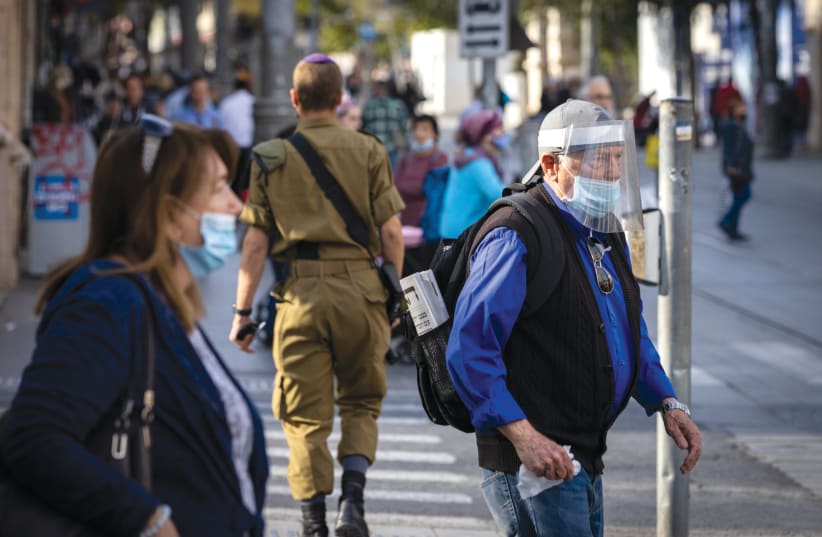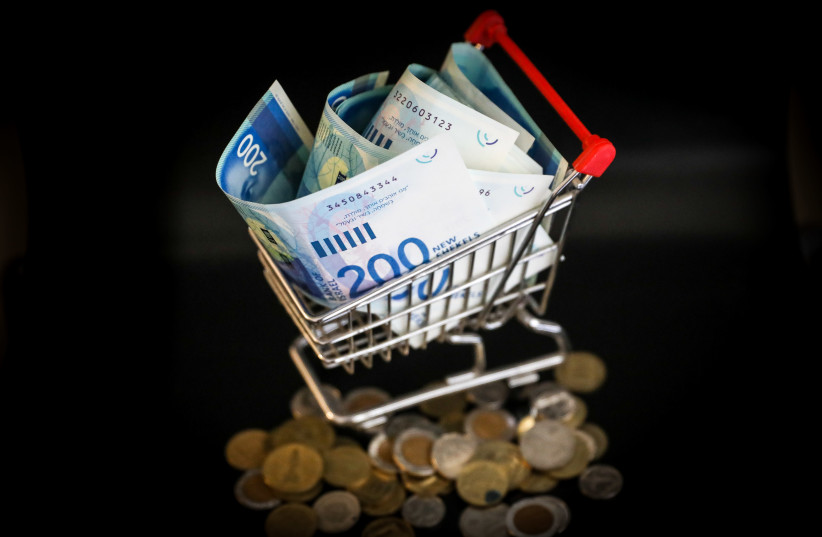Money makes the world go round it is said in the famous movie Cabaret, and it surely is the factor that allows an entire city to function. Although Jerusalem is still considered one of Israel’s poorest cities, it is also the largest city by sector – Jewish, haredi, Arab – and as such also has a large budget.
Every year the total amount goes up, and this year a record has been broken again, with a total budget of NIS 12.6 billion. This sum consists of two parts: NIS 5.3b. for development and substantial infrastructure projects (totally funded by the government), and NIS 7.3b. for the city itself with all its departments and administrations, including salaries for the close to 11,000 employees at Safra Square.
Where do these funds come from? Firstly, from the taxes the city’s residents – close to a million – pay for the services they receive. In numbers it is NIS 950 million from arnona (municipal property tax) paid on the west side, and NIS 130m. from residents on the east side, and this does not include city taxes from businesses, only residents.
The municipality also receives income from a wide range of taxes from signboards, business permits and more. But none of these are sufficient to enable such a big city to function. On top of it, as the capital, Jerusalem has always needed heightened support from the government, and that is why and how “Takanat Yerushalayim” was born – the special government grant added every year to the city budget.
The special grant, NIS 20m. in the early ’90s, has multiplied over the years and now stands at NIS 956m. More importantly, it no longer requires embarrassing power struggles between municipal and Finance Ministry officials, as has happened more than once in the past.
Due to the coronavirus, the city has had to deal with demands for discounts and indemnification, which have impact on the budget.
The enormous infrastructure and road works that have transformed Jerusalem into a large-scale construction site – including the roadwork for the light rail – are all funded by the government. But Mayor Moshe Lion has decided that in the framework of this work, the best thing would be to launch large-scale city improvement works. In almost every neighborhood, one can see workers renovating, building new sidewalks and pavements and adding facilities to prevent parking on sidewalks, and more.
In the city’s budget, all of this can be found under the rubric of city improvements. Here are some highlights: NIS 23m. for the lights across the city, with an additional NIS 1.3m. for decorative lighting for festivals of all denominations. The maintenance of the Valley of the Gazelles, for example, costs NIS 1.738m. per year. Planting flowers at several locations across the city costs NIS 1.197m. per year. As for the Old City Basin maintenance and safety budget, it stands this year, like last year, at NIS 650m.
Arts and culture
But it is no less interesting to check on the arts and culture section of the budget, to see if, despite Jerusalem being considered a poor city, culture is still prioritized.
For Lion, there is no doubt at all. Upon revealing the approved 2022 budget, he declared: “Jerusalem is becoming the cultural capital of Israel. We have approved a record urban budget, which also includes support for the cultural institutions in the city of Jerusalem, and it is a great source of pride. Culture is the spirit! We will continue to develop, support and strengthen it and establish cultural activities in the city.”
The 2022 budget for culture, sports and leisure is NIS 523m. – compared to NIS 416m. last year, an increase of about 25%. Culture and arts get NIS 136.269m., society gets NIS 99.525m., sports gets 68.743m., Torah culture gets NIS 27.642m., tourism gets NIS 10m. and youth programs get 18.800m. The administration (salaries and additional costs) receives 42.609m. All this together comes to NIS 403.586m., to which there is an additional sum of 25% that comes from the Culture and Sport Ministry.
As for the Arab sector, the total sum allocated by the municipality for the some 380,000 residents is NIS 5.065m. It includes cultural events, as well as education for adults and various artistic events in Arabic.
The Jerusalem Day event costs NIS 800,000, and the Remembrance Day event stands at NIS 1.305m.
The municipality supports cultural institutions, with NIS 39.5m. going to national museums, festivals, fairs, art high schools and special projects. The budget is intended to support cultural institutions throughout the city, including art institutions with a national reputation. This also includes the provision of subsidies. An additional sum of NIS 3m. goes to institutions that can secure a matching sum from other sources (mostly foundations and private grants).
JERUSALEMITES SHOULD know that 49% of all city salary expenses are for employees of the Education Administration (Manhi) – that is, NIS 300,953m.
Not far behind stands the Sanitation Division, with 35% of the salaries, or NIS 192.24m.
For municipality director-general Itzik Larry, this new budget is the major tool for enabling Jerusalem to continue development in all areas – education, infrastructure, cleanliness, city visibility and further development of culture and leisure. “In this way, residents of Jerusalem, from all its various communities, will be able to enjoy a wide range of cultural, sports and leisure events alongside well-developed urban infrastructure.”


